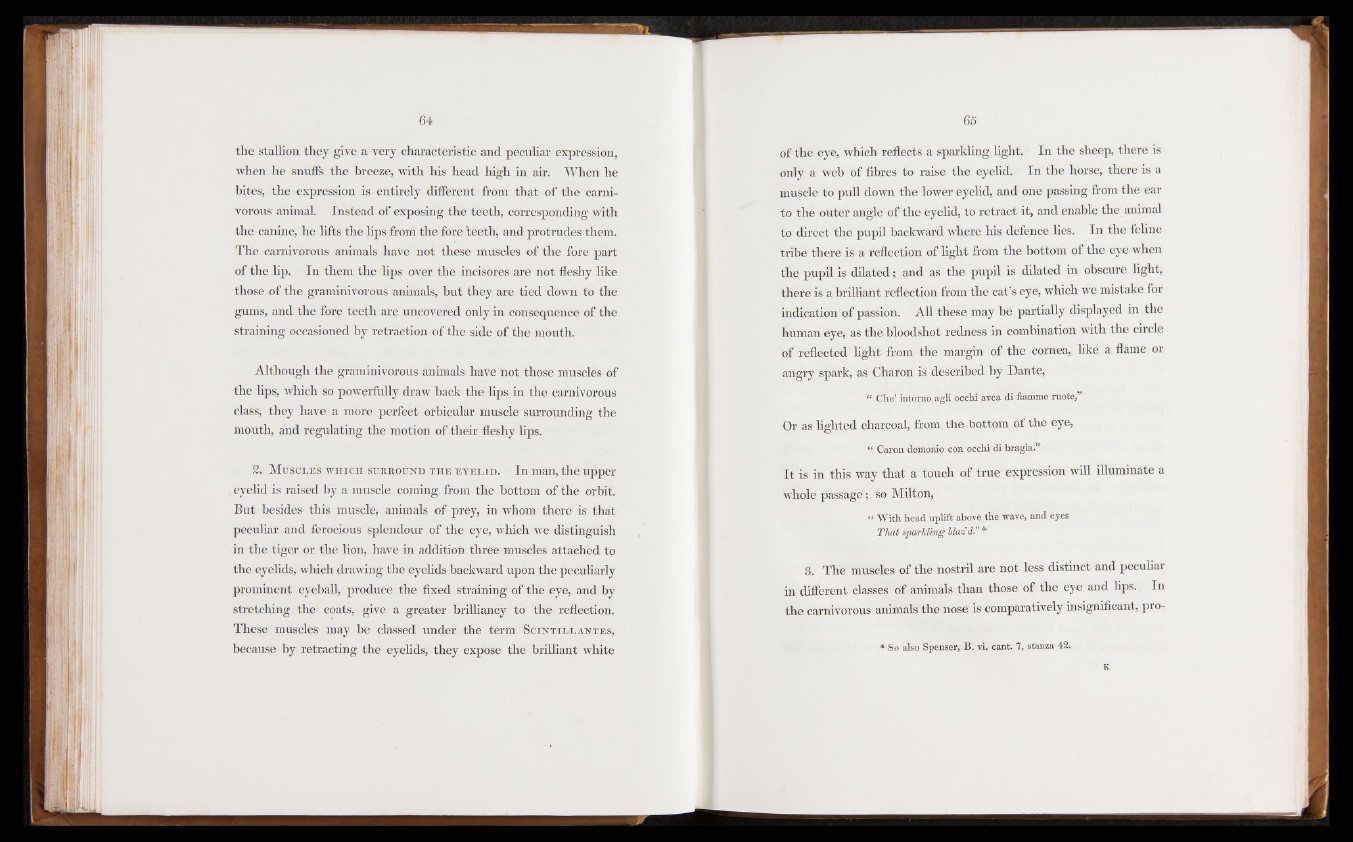
the stallion they give a very characteristic and peculiar expression,
when he snuffs the breeze, with his head high in air. When he
bites, the expression is entirely different from that of the carnivorous
animal. Instead of exposing the teeth, corresponding with
the canine, he lifts the lips from the fore teeth, and protrudes them.
The carnivorous animals have not these muscles of the fore part
of the lip. In them the bps over the incisores are not fleshy like
those of the graminivorous animals, but they are tied down to the
gums, and the fore teeth are uncovered only in consequence of the
straining occasioned by retraction of the side of the mouth.
Although the graminivorous animals have not those muscles of
the lips, which so powerfully draw back the lips in the carnivorous
class, they have a more perfect orbicular muscle surrounding the
mouth, and regulating the motion of their fleshy lips.
2 . M u s c l e s w h ic h s u r r o u n d t h e e y e l i d . In man, the upper
. eyelid is raised by a muscle coming from the bottom of the orbit.
But besides this muscle, animals of prey, in whom there is that
peculiar and ferocious splendour of the eye, which we distinguish
in the tiger or the lion, have in addition three muscles attached to
the eyelids, which drawing the eyelids backward upon the peculiarly
prominent eyeball, produce the fixed straining of the eye, and by
stretching the coats, give a greater brilliancy to the reflection.
These muscles may be classed under the term S c i n t i l l a n t e s ,
because by retracting the eyelids, they expose the brilliant white
of the eye, which reflects a sparkling light. In the sheep, there is
only a web of fibres to raise the eyelid. In the horse, there is a
muscle to pull down the lower eyelid, and one passing from the ear
to the outer angle of the eyelid, to retract it, and enable the animal
to direct the pupil backward where his defence lies. In the feline
tribe there is a reflection of light from the bottom of the eye when
the pupil is dilated; and as the pupil is dilated in obscure light,
there is a brilliant reflection from the cat’s eye, which we mistake for
indication of passion. All these may be partially displayed in the
human eye, as the bloodshot redness in combination with the circle
of reflected light from the margin of the cornea, like a flame or
angry spark, as Charon is described by Dante,
“ Che’ intorno agli occhi avea di fiamme ruote,’
Or as lighted charcoal, from the bottom of the eye,
“ Caron demonio con occhi di bragia.”
It is in this way that a touch of true expression will illuminate a
whole passage; so Milton,
“ With head uplift above the wave, and eyes
That sparkling blaz'd.” *
3. The muscles of the nostril are not less distinct and peculiar
in different classes of animals than those of the eye and lips. In
the carnivorous animals the nose is comparatively insignificant, pro-
* So also Spenser, B. vi. cant. 7, stanza 42.
K